Last-Minute NYC Holiday Gift Guide 🎁
We’ve created a holiday gift guide with presents for the intrepid New Yorker that should arrive just in time—


One of our favorite, long-standing quests at Untapped New York has been our attempt to visit all of the eagles that once adorned the original Pennsylvania Station in New York City. On our latest visit, we “met” the eagle at Valley Forge Military Academy in Pennsylvania. While Penn Station was being demolished from 1963 to 1968, the eagles became a symbol of the burgeoning preservation movement. People all over the country stepped up to adopt the eagles, ranging from school students to museums, zoos, colleges and universities. Out of the 22 eagles that once stood regally on the façade of Penn Station, 18 full eagles still exist today, along with one head and beak remnant in a museum.
Of all of the Penn Station eagles, the one at Valley Forge Military Academy might have the grandest base. The marble block the eagle sits on is engraved with the year 1965 and a memorial: “Presented by Mr. Walter H. Annenberg in honor of Valley Forge Military Academy Alumni Killed in Vietnam.” So how did it get from Penn Station to the military academy?
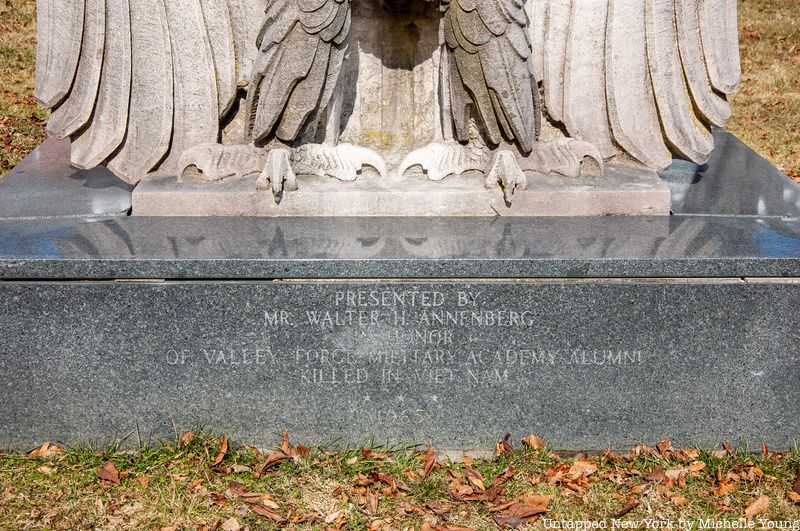
Walter H. Annenberg was the media mogul behind publications like TV Guide, The Saturday Evening Post, The Atlantic Monthly, Seventeen magazine, The Philadelphia Inquirer, and also served as the United States Ambassador to the United Kingdom from 1969 to 1974. Annenberg was on the board of Penn Central Railroad and knew its President, Alfred E. Perlman. As recounted in a 1971 letter from Annenberg to a Joan Amundsen of Hicksville, Long Island who had inquired about it, Annenberg had suggested to Perlman that he “would be pleased to have one of the eagles.”
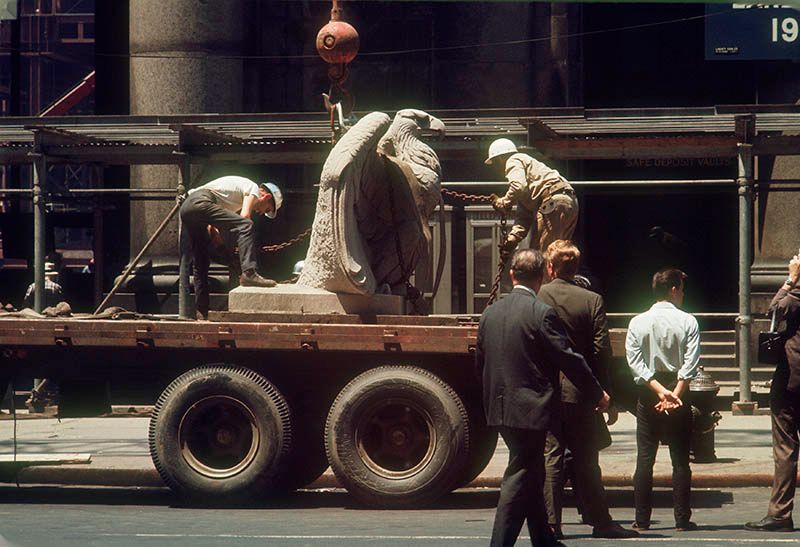
Based on the explanation in the letter, which was written on Embassy of the United States letterhead on October 1, 1971, the eagle was requested before the demolition began at Penn Station, when it “was to be dismantled,” and Annenberg offered to cover the cost of moving it from New York City to his estate, known as Inwood, in Wynnewood, Pennsylvania. Annenberg writes that the eagle “reposed for at least two years” on the corner of his estate. (Inwood has been owned by Philadelphia Eagles owner Jeff Lurie and his wife Christina since 2007, when they purchased it from the Annenberg family).
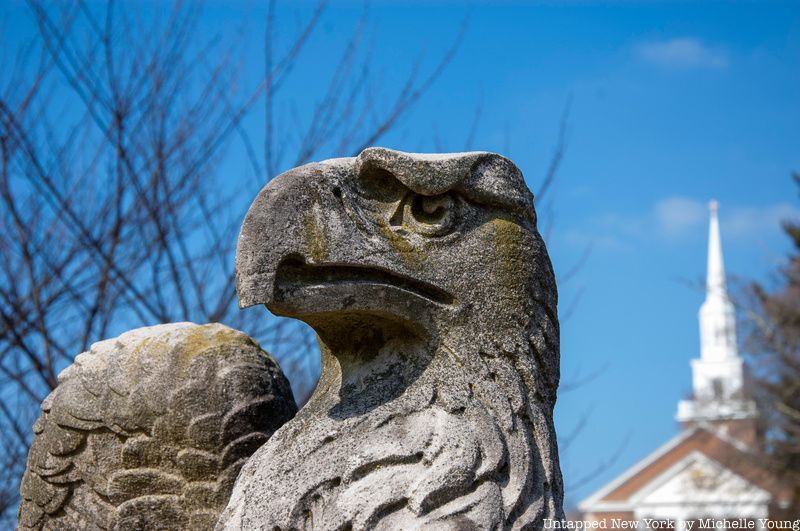
Justin Rivers, our Chief Experience Officer and an expert on Penn Station who leads our Remnants of Penn Station tour, says that the eagles were the first objects taken off of the station, on October 28, 1963. Based on Annenberg’s timeline, his eagle would have then been transported to Inwood shortly thereafter, where it sat until 1965, when it was moved to the military academy. Inwood is less than twenty minutes from Valley Forge Military Academy and Annenberg explains in the letter how the eagle ended up at the Academy:
One day General Milton G. Baker, Superintendent of Valley Forge Military Academy was visiting me, and we were discussing the war dead and he related about the lads from Valley Forge Military Academy who had given their lives, and I suggested that the eagle might make a fitting memorial to the boys of the Academy, and General Baker very much liked the idea. I subsequently arranged to move the eagle to the grounds of Valley Forge Military Academy at Wayne, and had it placed on a dignified marble base with a series of shrubs at the side and back, so as to give it a better setting.
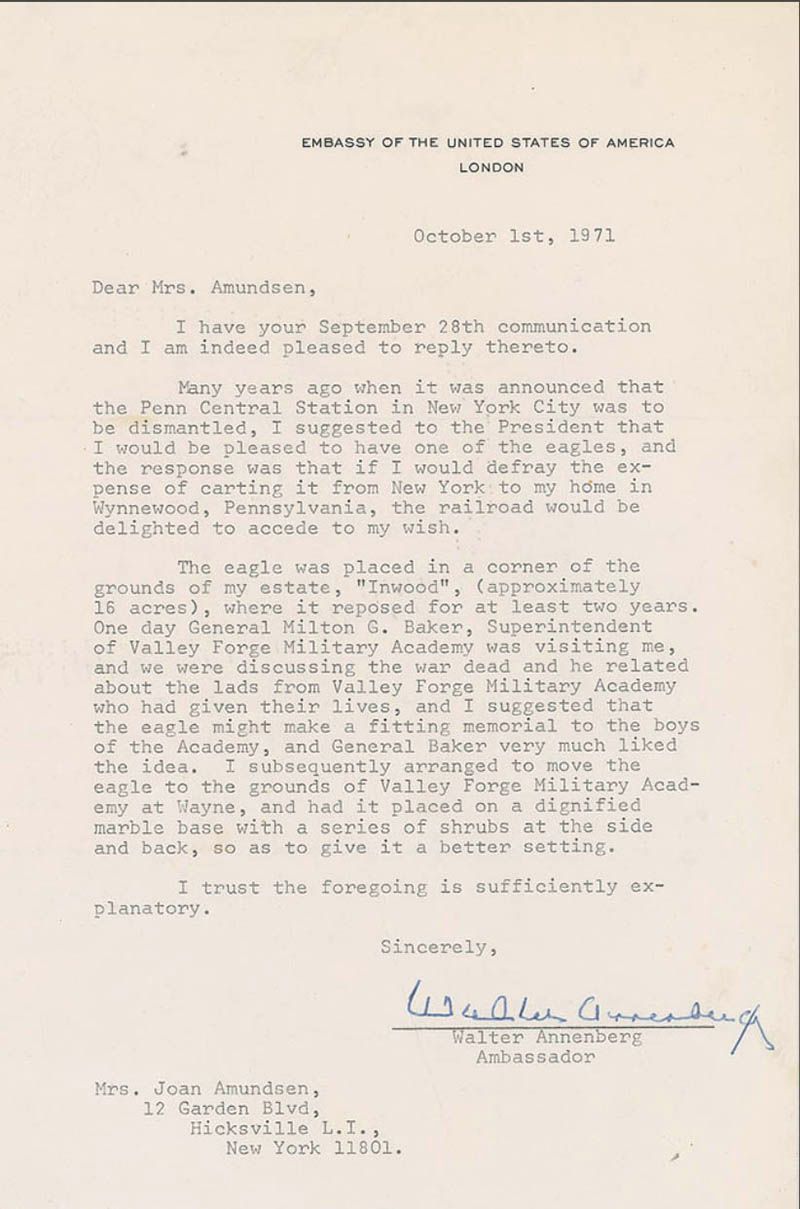
The story here has more formality than the legend, which has Annenberg’s wife laying down an ultimatum: “Either that eagle goes or you go!” according to David D. Morrison in his book Grand Central Terminal and Penn Station: Statuary and Sculptures. Tom Goldblum, the Director of Alumni Relations who runs the museum inside the Academy (and is an alumnus of the school himself), told us on a tour that General Baker “was always looking for something interesting to dedicate things to, and of course [the eagle] is a symbol of our country.”
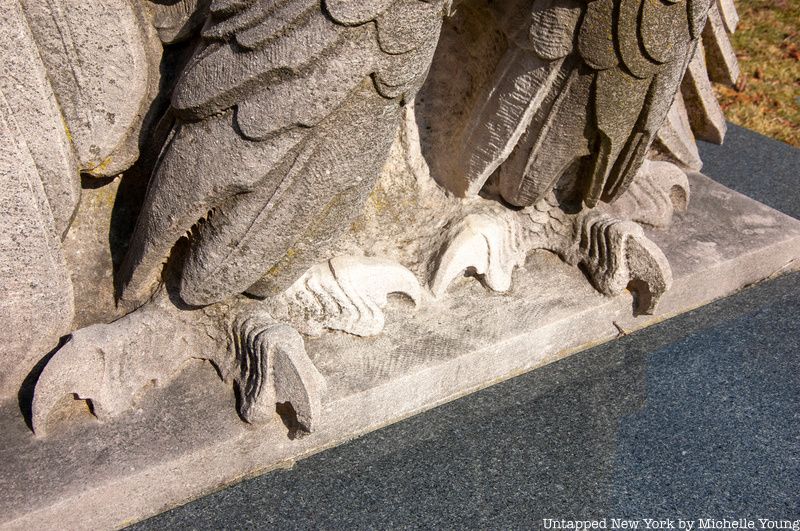
Valley Forge Military Academy and College was founded in 1928. It’s the youngest of the four military junior colleges, but the only one in the northeast and was created out the needs of World War I, explained Robert F. Smith, the Provost of Valley Forge Military College. It’s a college-prep boarding institution for grades 7-12 and a college that includes an early commissioning program, allowing students to become a second lieutenant by the end of sophomore year. Those students go on complete their bachelor’s degrees in “follow-on” universities around the country. It’s also the only military junior college to have a formal museum.
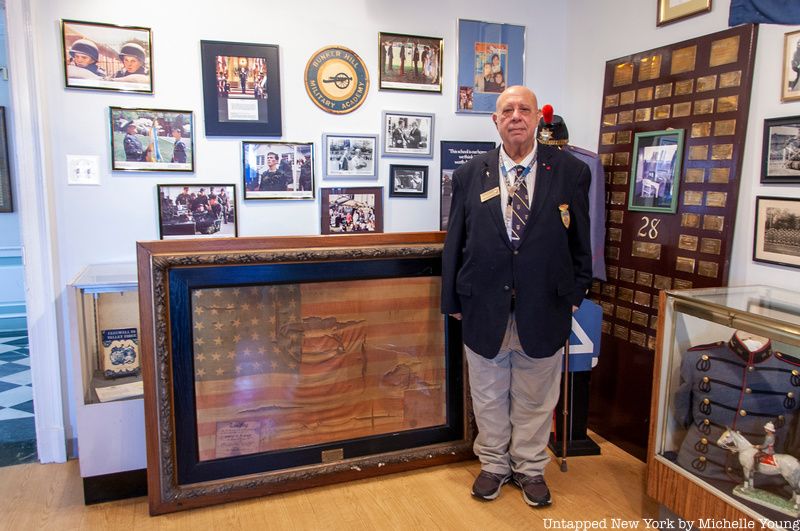
The connection to the Valley Forge site from the Revolutionary War is more philosophical than anything else. Smith, who is also the author of Manufacturing Independence: industrial Innovation and the American Revolution, says that Lieutenant General William Baker founded the academy here because “what we’re doing is here is what von Steuben and the Continental army did right at Valley Forge — forging people, forging an army.” The original location for the academy was further down the road, but was destroyed in a fire, so the school relocated here on property once belonging to the nearby golf club.
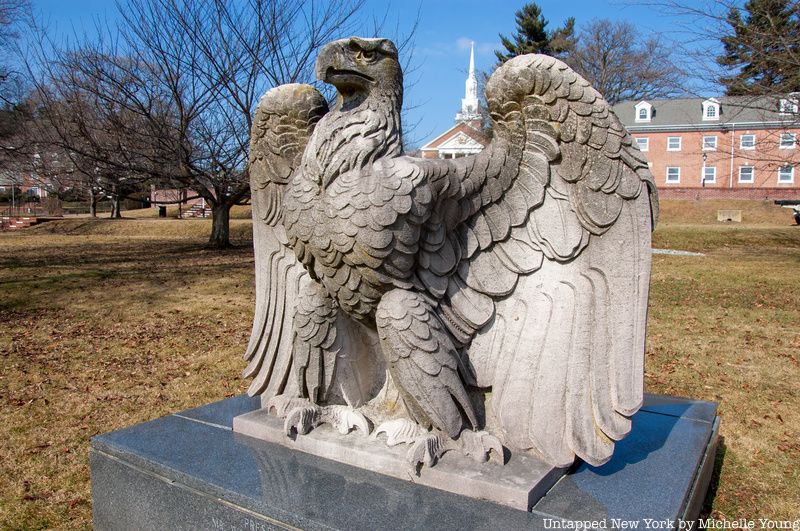
Two other Penn Station eagles have a military connection, located at the Kings Point Merchant Marine Academy on Long Island. To learn more, join Justin Rivers on our next tour of the Remnants of Penn Station:
Find out where the other eagles are located in our article here!
Subscribe to our newsletter